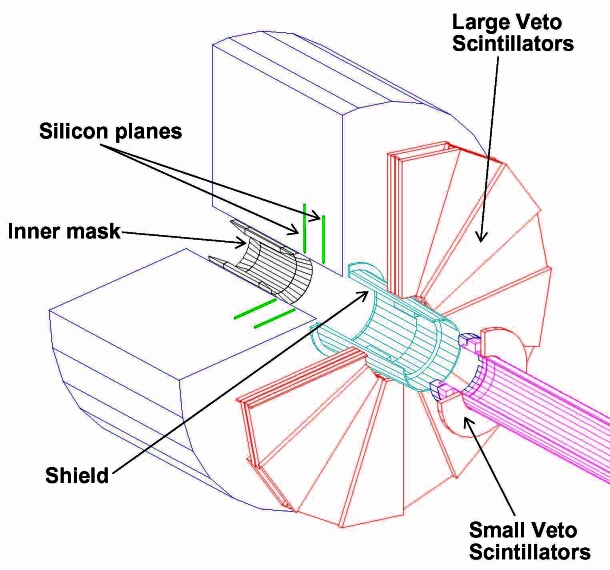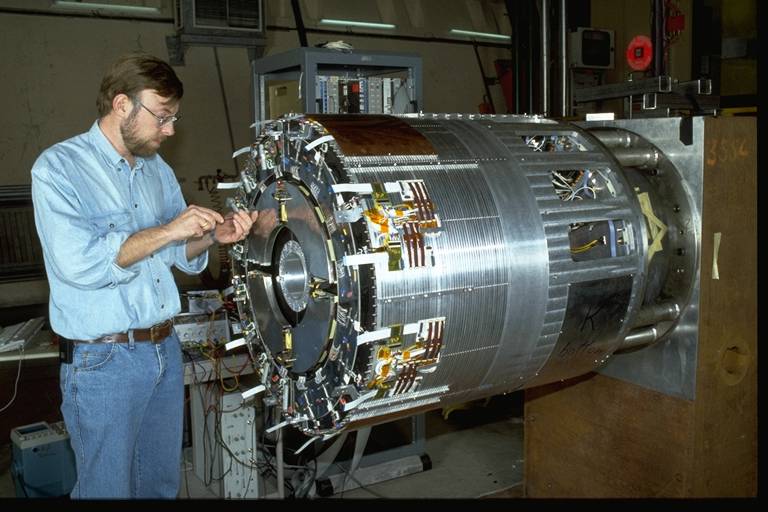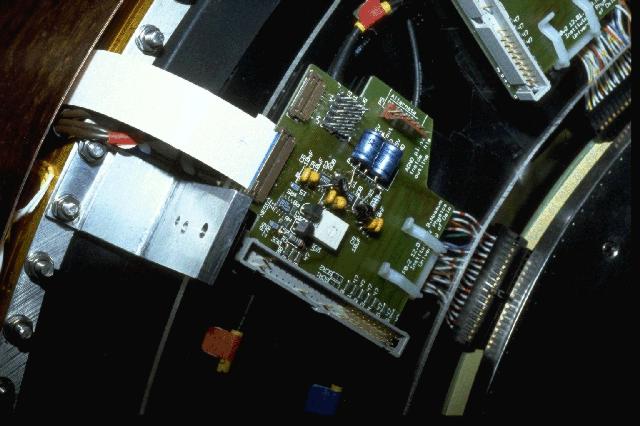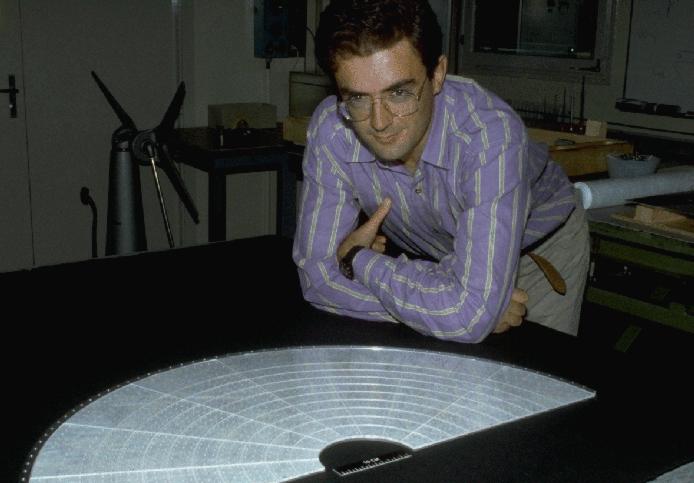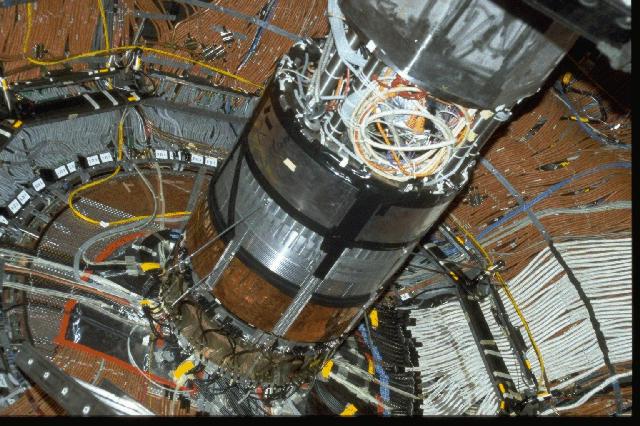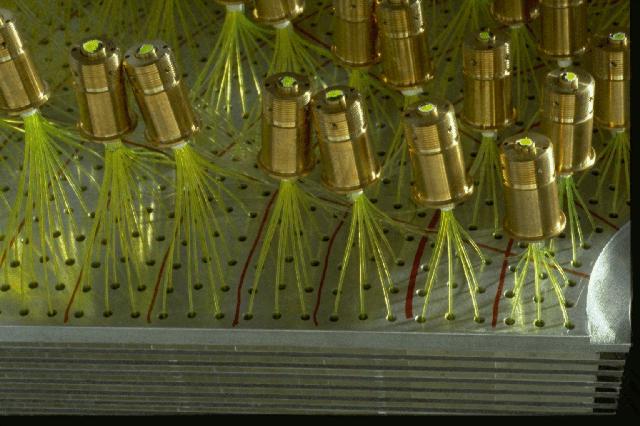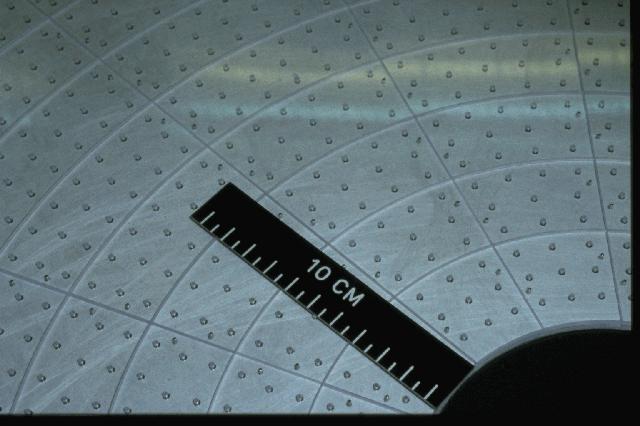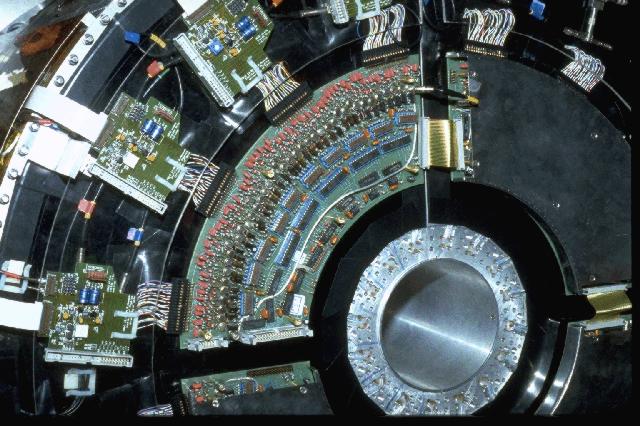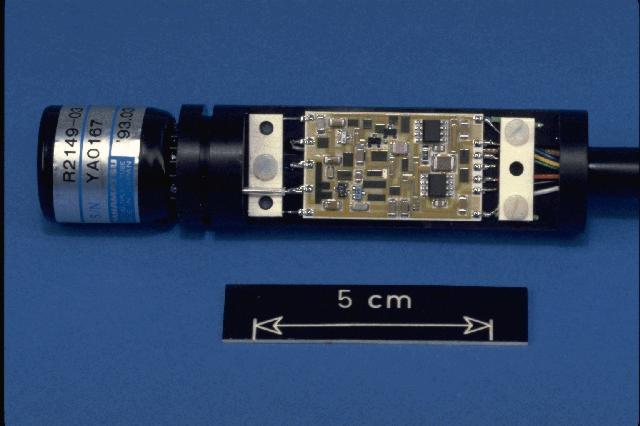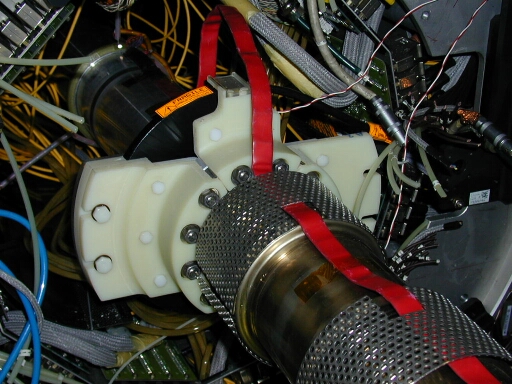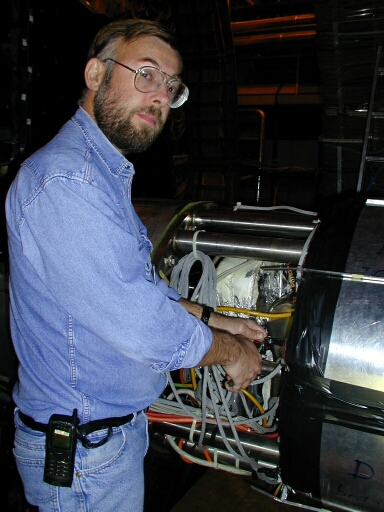The Small angle TIle Calorimeter (STIC) provided calorimetric coverage in
the very forward region of the DELPHI experiment at the LEP collider. The
major task of the calorimeter was to provide high precision luminosity
measurement by measuring with permill accuracy the Bhabha cross section.
The STIC was made up by two cylindrical detectors placed on either side of
the DELPHI interaction region and mounted around the beam pipe. The
detectors were 84 cm in diameter and 90 cm long. A tungsten shield
in front of the calorimeter provided a very sharp shadow which was used
to define with high precision the acceptance for Bhabha electrons.
The internal mechanical precision
of the detector had in addition to be better than 50 microns.
The detector was a sampling lead-scintillator calorimeter where the blue light
produced by the electromagnetic shower in the scintillator was carried to
the photodetectors at the back of the calorimeter by means of plastic
fibers doped with green wave length shifter. The fibers collected the light
over the whole depth of the calorimeter and were uniformly distributed over
the calorimeter cross section. In front of the calorimeters a set of scintillation
counters, called the veto counters, were used to separate electrons from photons.
Inside the calorimeters were two layers of
Si strip detectors which were used to measure the direction of the showers.
19,000 scintillator pieces with 490 different shapes were produced in
IHEP-Protvino for the detectors. They were individually machined from injection molded
scintillator plates with a very high precision. 800,000 holes had to be drilled
and punched in the scintillators and absorbers
to let the 8,000 fibers through. Because of the high mechanical precision
which was needed, all work was
done in a temperature controlled enviroment (21+-0.5 degrees).
The STIC project was a collaboration between 13 institutes from Italy,
Russia, Norway, Sweden, Portugal and CERN. A total of ca. 60 people was
involved in the project. The detector was installed in DELPHI in 1994
and I was the STIC project leader during 1996-2001.
Responsible for the content of this page is
Vincent Hedberg
Responsible for the content of this page is Vincent Hedberg
